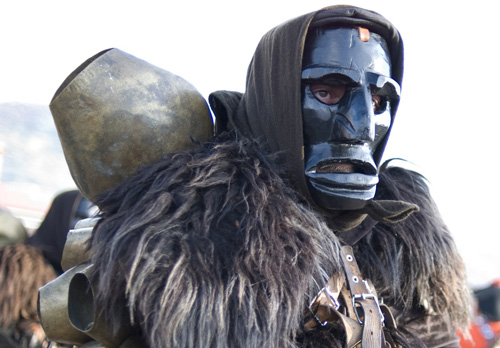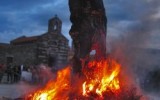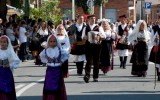
Carnival in Sardinia is a very picturesque event and has different faces according to the area of Sardinia. Villages and towns all have their own version and their particular way to approach the celebrations that are very much entangled with tradition and supernatural beliefs. In the north of the island the main carnival celebrations take place in Tempio Pausania, though you have similar parties in smaller scale in the surrounding villages. The main figure of the Tempio’s carnival tradition is king Giorgio who stands trial during the days of celebrations and then is burnt in the bonfire on the last day. The carnival in Bosa is also a good one with king Giorgio at the centre of the scene, all surrounded by music, carnival masks and lots to eat and drink.
Sa Sartiglia in Oristano is the most spectacular and choreographed Carnival in Sardinia. An equestrian game with ancient origins in which brave horsemen compete with one another in a tournament to select the figure of Su Componidori, the horseman that wearing a mask of a mysterious God will pierce the star. It is the fight to conquer the ring and finally the star, a celebration infused with many symbols, a festival of magic, of prosperity, misery, of suffering and hope. The atmosphere is dramatic with the incessant rolling of the drums when the horseman wearing the mask of a mysterious God draws his sword holding it in front of him, he stands up on his saddle while he is galloping at high speed along the road, moments later the point of the sword pierces the star. He then proudly parades through the cheering crowd showing off his trophy.
In the centre of Sardinia, in Mamoiada, a small village in the mountains in the Barbagia area, carnival celebrations are most impressive. The “Mamunthones” and the “Issohadores” parade through the street with their faces covered with traditional wooden masks. The Mamunthones are covered in a sheepskin and wear a dark wooden mask. The heavy cowbells on their back make a rhythmic sound as the Mamunthones march through the streets in a line jumping together. They are lead by the Issohadores, who represent the animal guardians, who sometimes catch them with a rope to keep them in line just like they would do if an animal tried to escape from the group. The whole parade is breathtaking and shows the connections villages still have with ancient traditions.
The dates vary every year. It is normally in February, either at the beginning or middle depending on the first day of Lent, in fact the carnival always ends on Ash Wednesday. The festival takes place on the Sunday and the Tuesday of the Carnival.






